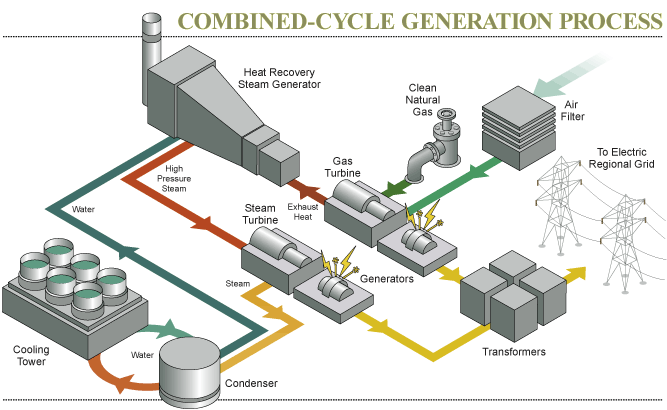Thanks largely to the move by power generators from coal to gas, energy-related carbon dioxide emissions sink to 12% below 2005’s levels: EIA
The natural gas industry along with its electric power generation customers have scored a big win for climate change – in the category of carbon emissions reduction.
Energy-related carbon dioxide emissions have fallen to a level 12% below 2005’s levels, the EIA reported today. Biggest reason for the big decline: decreased use of coal and the increased use of natural gas for electricity generation.
Overall, the fuel-use changes in the power sector have accounted for 68% of the total energy-related CO2 reductions from 2005 to 2015.
Two of the largest factors in year-to-year fluctuations of energy-related CO2 emissions are the economy and the weather, according to the EIA. Adjusted for inflation, the economy in 2015 was 15% larger than it was in 2005, but the U.S. energy intensities and carbon intensities have both declined. On a per-dollar of gross domestic product (GDP) basis, in 2015, the United States used 15% less energy per unit of GDP and produced 23% fewer energy-related CO2 emissions per unit of GDP, compared with the energy and emissions per dollar of GDP in 2005.
The largest annual decline in energy-related CO2 emissions in the past decade occurred in 2008–09 during the recession.
Meantime, a combination of government climate policy, power generation economics, low natural gas prices and technology advances has put natural gas in the driver’s seat as the preferred fuel when planning and building new baseload power plants.
The Energy Justice Network and Google have mapped electrical generating plants in the U.S. According to latest data, the power plants tally as follows:
Operating NatGas Plants: 1,573
Proposed New NatGas Plants: 137
Expanding NatGas Plants: 35
Closed NatGas Plants: 241
Operating Coal Plants: 504
Proposed New Coal Plants: 126
Expanding Coal Plants: 5
Closed Coal Plants: 267
In its February 2014 report on combined-cycle natural gas plants, Power Engineering Magazine referenced the Energy Information Administration’s projection that natural gas would overtake coal as the dominant source of power generation by 2035. But no one in 2014 could see the pace of coal plant retirements accelerating to today’s blistering rate. In March of this year, the EIA revised its forecast to put 2016 as the year natural gas will likely overtake coal.
Combined-cycle gas power plants: highly efficient use of fuel and exhaust heat
The Power Engineering report defines the benefits of combined cycle power plants, which feature gas and steam turbines, as follows: “The gas turbine generates electricity using natural gas, while the steam turbine generates electricity using waste heat from the gas turbine. The process is highly efficient because the exhaust heat, which would otherwise be lost in the stack, is re-used in the steam turbine to generate additional electricity. The exhaust heat is sent to a heat recovery steam generator (HRSG), where the heat is absorbed by heat exchanger tubes containing hot water to create steam for the steam turbine.”
Important disclosures: The information provided herein is believed to be reliable; however, EnerCom, Inc. makes no representation or warranty as to its completeness or accuracy. EnerCom’s conclusions are based upon information gathered from sources deemed to be reliable. This note is not intended as an offer or solicitation for the purchase or sale of any security or financial instrument of any company mentioned in this note. This note was prepared for general circulation and does not provide investment recommendations specific to individual investors. All readers of the note must make their own investment decisions based upon their specific investment objectives and financial situation utilizing their own financial advisors as they deem necessary. Investors should consider a company’s entire financial and operational structure in making any investment decisions. Past performance of any company discussed in this note should not be taken as an indication or guarantee of future results. EnerCom is a multi-disciplined management consulting services firm that regularly intends to seek business, or currently may be undertaking business, with companies covered on Oil & Gas 360®, and thereby seeks to receive compensation from these companies for its services. In addition, EnerCom, or its principals or employees, may have an economic interest in any of these companies. As a result, readers of EnerCom’s Oil & Gas 360® should be aware that the firm may have a conflict of interest that could affect the objectivity of this note. EnerCom, or its principals or employees, may have an economic interest in any of the companies covered in this report or on Oil & Gas 360®. As a result, readers of EnerCom’s reports or Oil & Gas 360® should be aware that the firm may have a conflict of interest that could affect the objectivity of this report.






